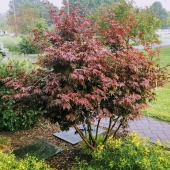Now a closer look at the cover crop sowing process itself.
Figure 7 shows the tupperware cointainer full of $35 worth of seeds from the organic store. This is my latest evolution, consisting of buckwheat, sunflower, linseed, chickpea, soy, quinoa, chia, and mung bean. I actually take my mixing box into the store with me, and dump the paper bags into the box after they've been weighed and priced at the register. The store then get the bags back for re-use, which impresses them no end. They're also extremely curious about what I'm actually doing with the seed mix, and I have a feeling I may have infected a few brains with the concept of at least
polyculture, if not cover cropping itself. Especially when I tell them that it keeps weeds away from my vegetables, as well as fertilising them.
Figure 8 shows exactly how densely I put the seedmix on the ground. There is NO exposed soil once they begin to break the surface.
Figure 9 is the result after just running my fingers up and down the area a few times to mix the seeds in a bit. Shown here is also a sweet potato that has been left to sprout, and is now ready for planting. Just behind the area you can see a
fence panel from the east side of my walipini. Ground level for the walipini is 1.2 metres below this planting. The sweet potato vines will grow up the
fence and over the wire roof to provide shade from the summer sun (Currently southern hemisphere summer). As winter comes on, the vines will die back and begin to expose the walipini to the warming winter sun.

 1
1








 1
1








 1
1




















